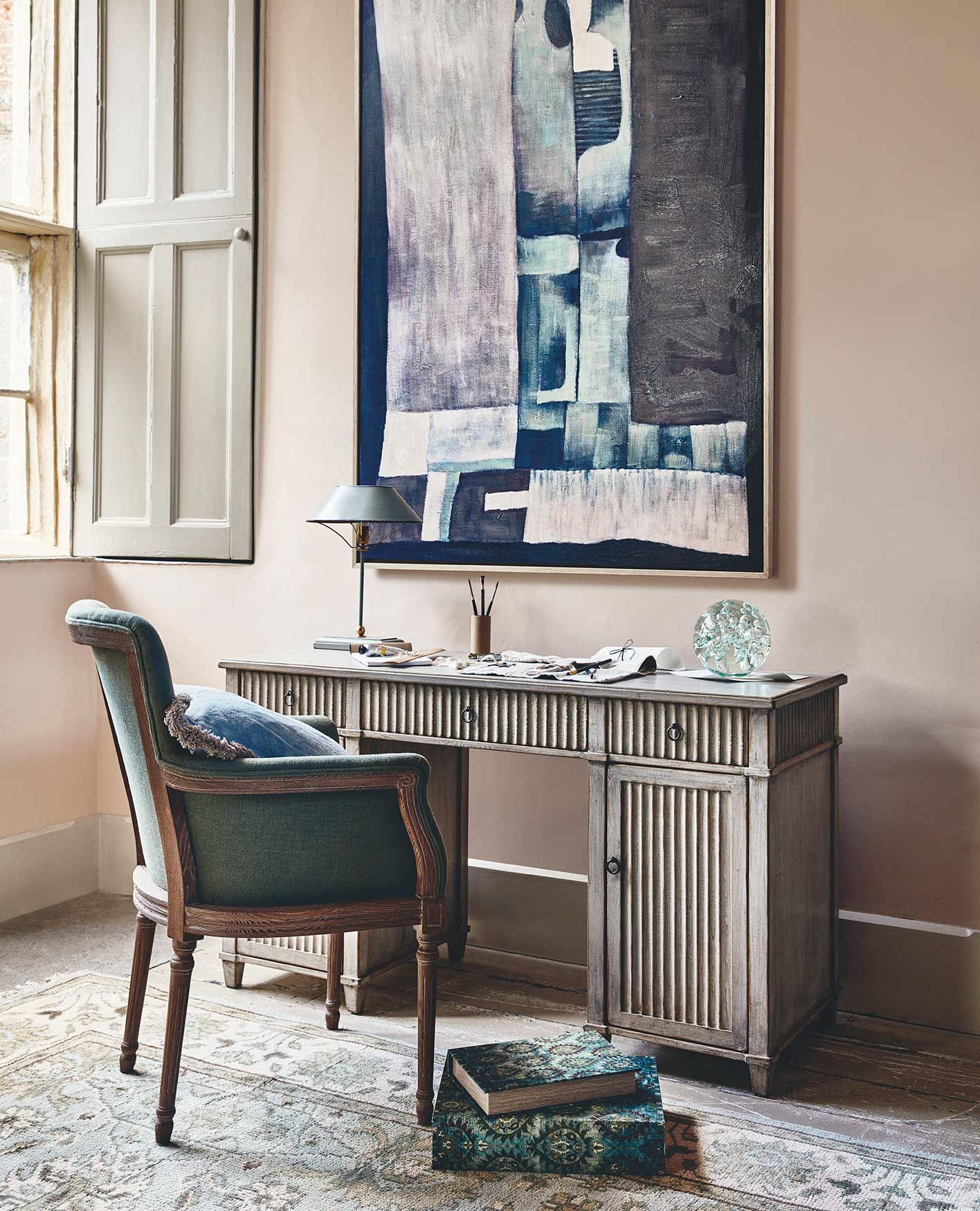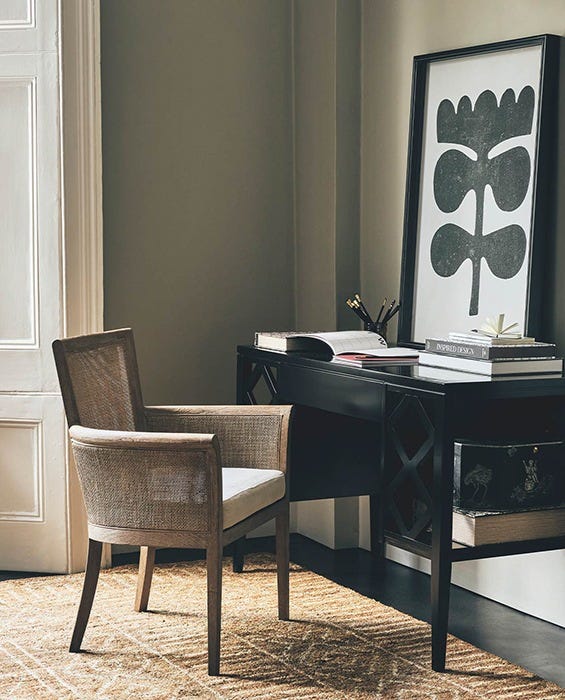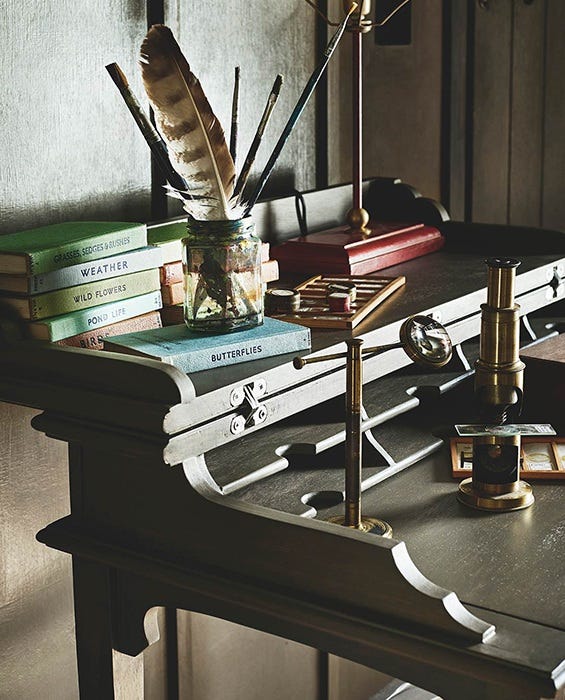Creating a productive environment for working from home

Working from home has its benefits – waving goodbye to the daily commute, welcoming an extra hour in bed, time for regular workouts – but transforming your living space into a productive work environment also has its challenges. Without the defined floorplan and collaborative arrangement of a designated office, how do you create a space that is set up for minimal distractions and maximum creativity and productivity? And also make it one that, at the end of the 9 to 5, you can walk away from without fear of it encroaching on your down time. Explore our tips and discover how to do just that by creating a home office that’s designed to be the most efficient, comfortable and creative space possible.
Designate a space to work at home
Even though your morning commute is now simply a matter of a short walk downstairs or along the hallway into the adjacent room, there’s some psychology to the “arrival” at the office. Rather than setting yourself up in a different makeshift spot each day, establish a designated workspace – it will create that same feeling of getting into the office and indicate to your mind that it’s time to launch into “work mode”. Having a study or spare room is ideal, as your quiet home office is already waiting for you. If, however, space constraints are an issue, there’s no need to worry – the essentials for a home office are a comfortable (and supportive) chair, a decent-sized surface and a little creativity.
In open-plan living spaces, a room divider is a useful piece; as well as marking off an area for you to work, it adds a unique design element to the space as a whole. Next, you need to furnish your new work-space nook, starting with a desk that suits your scheme as well as your professional requirements. If a full-sized desk isn’t an option (perhaps because it won’t fit), there are a host of other simple alternatives: dressing tables can be transformed into a desk in a matter of minutes, two bedside tables (of a decent height) can be pushed together to create a worktop, or you could even open a large, tall cupboard and use the interior as a workspace. The latter is a neat trick, as you can physically shut the doors on your job when your work is done each day.
Wherever you choose to seat yourself, you’ll need something to sit on. Your desk chair should ideally offer strong lower back support and allow your feet to sit firm and level on the floor. If sitting on a dining chair that you’ve repurposed for the job at hand, opt for one with a high back, as it will naturally make you sit up straighter – better for long days in front of a computer screen.
The impact of noise and light is also worth considering. The quieter the space the better: it’s easy to get distracted if you live with others or have children. Natural light is proven to boost productivity, as well as mood, and reduces the chances of headaches and fatigue that can occur when focusing on a screen all day. If possible, choose a spot that is close to a window – fresh air is a plus as well. If you’re using table lamps, try and choose a lampshade that roughly aligns with the top of your screen to ensure that you get maximum light with minimum glare.


Create a home working routine
One of the great things about working from home is that you lose the impersonal neutrality of shared desks in open-plan offices. At home, you can inject as much personality into your workspace as you would the rest of the house. Start with the essentials: stationery and storage. If you’re short on space or working from a makeshift desk, items such as box files and pen holders are all the more important to keep things organised. In addition to being practical and reducing clutter, these items can be used to introduce decoration on your worktop or even bookshelves, if you have plenty of space to work with. An excellent choice for storing files, papers and other home office essentials, a stack of shelves provides ample storage while taking up very little real estate on the floor.
As visually interesting spaces stimulate creativity, it’s worth thinking beyond purely practical pieces. Staring at blank walls all day is no good for your mindset, so try to incorporate some colour. Feng shui principles suggest that warm tones are the best for creativity while cooler hues are ideal for work that’s more logic-based. There are plenty of ways to draw colour into a room, too, so you can start your creative thinking with this activity.
If you need a few pointers, we’d suggest considering rugs; perfect for introducing colour, they also act as a warm, welcoming element and help to punctuate your space visually. Artwork is a simple and effective choice as well, with prints and pictures offering a good point to refocus your gaze if you need a screen break or to think something through. You don’t want to get distracted by the art, however, so try and choose pieces that inspire with a minimal palette. Artwork also offers flexibility and avoids a space feeling stale – you can switch pieces in and out if you feel as though you need a change of scene. If you sit at the trusty dining table, try putting a pinboard the width of the space up on the wall facing you and using it like a mood board (or to pin up work notes and to-do lists, if you need them). This detail has the effect of delineating where you work, offering an element of visual appeal without encroaching on the living area.
If you’re likely to find yourself conducting or joining regular virtual meetings and video calls, your backdrop is important. Position yourself in front of well-placed artwork or a blank wall; it will look much more professional than the view of your kitchen or those you live with.
At home, you can also let your green-fingered whims run wild. Not only do plants look fabulous, they also improve air quality by removing impurities. These natural elements are also thought to alleviate stress and, according to Feng Shui principles, improve communication and energy – ferns, bamboo and snake plants in particular are encouraged for this. Bamboo and snake plants are happy in low levels of light, so should thrive regardless of how close you (and they) sit to a window. Alternatively, you could try artificial plants: they require zero maintenance and still bring that mood-boosting touch to your workspace.


Create a home working routine
While the idea of rolling out of bed at 8.55am might sound appealing, it’s important to structure your day. Set an alarm from Monday to Friday as you would usually if you were commuting in to an office; if you’re a fan of a morning workout, don’t let the shift in routine change this. Continue to get up at your usual time and go for a run or embrace a home gym session. Equally, if you’re finding you have lots of time to spare in the morning, thanks to the lack of commute, make the most of it: start exercising, read a book or make a proper breakfast, all of which will set you up much better for the day than languishing in bed. If your company operates on flexi-time, you could also look at starting and finishing work earlier to reflect your change in schedule.
Gone are the days when working from home was synonymous with slacking, but the feeling of needing to be available at all times can be much stronger when you’re not in the office. Make sure you allow yourself a proper lunch break, away from your screen and desk, and take breaks as you would normally—they’re key to both productivity and your wellbeing.
Lastly, be sure to separate the professional from the personal. It’s easy for the two to blur when you’re at home. If you work at the dining table, pack away your things until the next morning and if you have a work phone, (unless it absolutely must remain on) set a boundary by turning it off in the evening.
